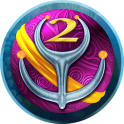掌握动词make的千变万化用法
作者:佚名 来源:未知 时间:2024-11-01
动词make的用法极为丰富,是英语学习中不可或缺的一部分。在日常交流、写作及考试中,准确掌握make的用法能够显著提升语言表达的准确性和地道性。以下是关于make的多种用法,结合具体例句进行详细阐述。

首先,make作为及物动词,其基本含义是“制作、做”。例如,“She made a cake for her son's birthday.”(她为儿子的生日做了一个蛋糕。)这里,make直接接宾语,表示制作某物。此外,make还可以表示“造成、引起”的意思,如“The noise made me feel uneasy.”(噪音让我感到不安。)在这个句子中,make接双宾语,其中me是间接宾语,feel uneasy是直接宾语,表示噪音对“我”造成的影响。

在被动语态中,make的被动形式为be made,常用于描述某物被制作出来。如“The book is made of paper.”(这本书是用纸做的。)这里,book是主语,is made是谓语,paper是宾语,表示书是由纸制作而成的。需要注意的是,在描述某物由何种材料制成时,我们通常使用be made of或be made from,而不用make。

make还可以与一些特定的介词或副词搭配,形成固定短语,表达特定的意思。例如:
1. make up:意为“编造、捏造”或“化妆、打扮”。如“She made up a story to explain her absence.”(她编造了一个故事来解释她的缺席。)和“She made up her face for the party.”(她为参加聚会化了妆。)
2. make out:意为“看清、辨认出”或“理解、明白”。如“I could hardly make out the words on the faded page.”(我几乎看不清褪色页上的字。)和“I can't make out what he's saying.”(我听不懂他在说什么。)
3. make off:意为“匆忙离开、逃走”。如“The thief made off with the jewels.”(小偷带着珠宝逃走了。)
4. make for:意为“走向、前往”或“有助于、导致”。如“He made for the door and left the room.”(他朝门走去,离开了房间。)和“Good health makes for happiness.”(健康有助于幸福。)
5. make over:意为“转让、移交”或“改造、重新设计”。如“She made over her property to her children.”(她把财产转让给了孩子们。)和“The designer made over the old dress to give it a new look.”(设计师重新设计了旧裙子,使其焕然一新。)
此外,make还可以与一些形容词或名词搭配,形成习惯用语,表达特定的情感或状态。例如:
1. make a difference:意为“有影响、有作用”。如“Your support makes a big difference to our project.”(你的支持对我们的项目有很大影响。)
2. make a fool of oneself:意为“出丑、使自己成为笑柄”。如“He made a fool of himself by tripping over in front of everyone.”(他在大家面前绊了一跤,出尽了洋相。)
3. make a living:意为“谋生、维持生活”。如“He makes a living by writing novels.”(他靠写小说谋生。)
4. make a mistake:意为“犯错误”。如“I made a mistake when I calculated the total.”(我在计算总数时犯了错误。)
5. make a noise:意为“发出声音、吵闹”。如“The children were making a noise in the backyard.”(孩子们在后院吵闹。)
6. make a point:意为“强调、着重说明”。如“He made a point of thanking everyone who helped him.”(他特地感谢了所有帮助过他的人。)
7. make friends:意为“交朋友”。如“She made friends with the other girls in the class.”(她和班上的其他女孩交了朋友。)
8. make sense:意为“有道理、有意义”。如“What he said didn't make any sense to me.”(他说的话对我来说毫无意义。)
在动词短语中,make还可以与其他动词结合,形成连动式短语,表达更为复杂的动作或状态。例如:
1. make someone do something:意为“使某人做某事”。这里,make后接省略to的不定式作宾语补足语。如“The teacher made the students finish their homework.”(老师让学生完成了作业。)
2. make something done:意为“使某事被做”。这里,make后接过去分词作宾语补足语,表示被动意义。如“He made the car repaired before selling it.”(他在卖车之前把车修好了。)需要注意的是,在实际使用中,我们更倾向于使用have something done来表达这一意思。
3. make someone/something + adj.:意为“使某人/某物处于某种状态”。这里,make后接形容词作宾语补足语。如“The sun makes me feel warm.”(太阳让我感到温暖
- 上一篇: 揭秘中国五色土:五种神秘土壤及其分布地图
- 下一篇: 智慧团建系统密码遗忘解决指南
































